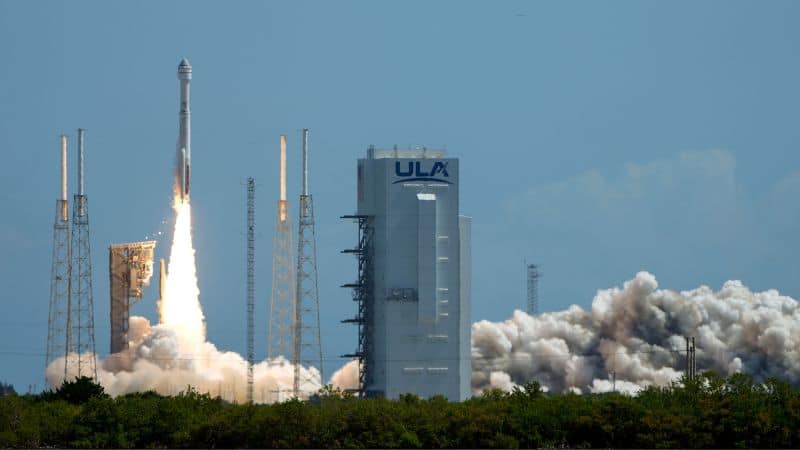
Boeing's Starliner encounters additional helium leaks en route to ISS
What's the story
Boeing's decade-long Starliner mission has run into new problems on its journey to the International Space Station (ISS), as reported by NASA. Early today, the space agency announced the detection of two more helium leaks in the spacecraft, adding to a previously identified leak in May that was deemed acceptable before launch. "Teams have identified three helium leaks on the spacecraft. One of these was previously discussed before flight along with a management plan," NASA stated in a post.
Leak management
Astronauts informed of helium leaks, mission continues
Astronauts Barry Willmore and Sunita Williams were alerted by mission control about the need to close two valves due to the newly detected helium leaks. "Looks like we picked up a couple more helium leaks," mission control communicated, guiding them through the valve shutdown process. Despite this issue cutting an hour from their nine-hour rest period, NASA and Boeing have confirmed that the crew is safe and instructed them to sleep while data analysis continues.
Twitter Post
Take a look at NASA's post
The #Starliner crew continues to make their way to the @Space_Station and are in a sleep period. Teams have identified three helium leaks on the spacecraft. One of
— NASA's Johnson Space Center (@NASA_Johnson) June 6, 2024these was previously discussed before flight alongwith a management plan. The other two are new since the…
Historic launch
Starliner's historic launch and journey to ISS continues
Despite the helium leaks, Starliner's voyage toward the ISS continues with its crew currently resting, according to a post by NASA's Johnson Space Center. The spacecraft was launched atop an Atlas V rocket from Cape Canaveral Space Force Station in Florida on Wednesday. The mission, known as Crew Flight Test, marked the first time that the spacecraft carried a crew to space as part of Boeing's efforts to develop SpaceX's rival under NASA's Commercial Crew Program.
Journey
Starliner's inaugural journey marks a milestone in US space history
The flight marks only the sixth inaugural journey of a crewed spacecraft in US history, as noted by NASA Administrator Bill Nelson. "It started with Mercury, then with Gemini, then with Apollo, the space shuttle, then (SpaceX's) Dragon — and now Starliner," Nelson said. Williams also made history as the first woman to fly aboard such a mission. After reaching the space station, Williams and Wilmore are expected to spend about eight days living in the orbiting laboratory.
Launch challenges
Previous launch attempts scrubbed due to technical issues
Previous crewed launch attempts on May 6 and June 1 were cancelled due to various issues including a valve issue on the second stage of the Atlas V and a small helium leak within the spacecraft service module. During Wednesday's launch countdown, mission specialists monitored this leak and reported no issues. However, an automatic hold was triggered just three minutes and 50 seconds from liftoff on Saturday afternoon due to an issue with ground support equipment.
Technical resolution
Faulty computer identified and replaced before successful launch
After the automatic hold was triggered, engineers assessed the ground support equipment over the weekend and isolated the issue to a single ground power supply within one of the computers responsible for key countdown events. The faulty computer was subsequently replaced with a spare. This successful troubleshooting allowed for Starliner's historic launch, marking a significant milestone for Boeing.
Safety measures
Crew safety assured despite helium leaks
Despite the helium leaks, Boeing aerospace engineer Brandon Burroughs assured that the crew is safe. "We have some issues to watch overnight when in regards to the helium leaks that was just brought up, and we have a lot of smart people down here on the ground that are going to take a look at this stuff and keep an eye on it, but the vehicle is in a configuration right now where they're safe to fly," said Burroughs.